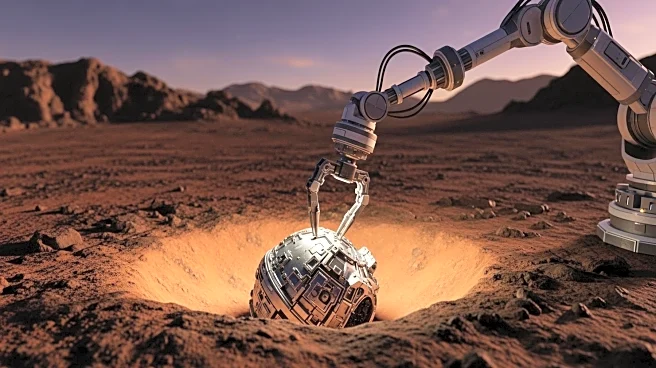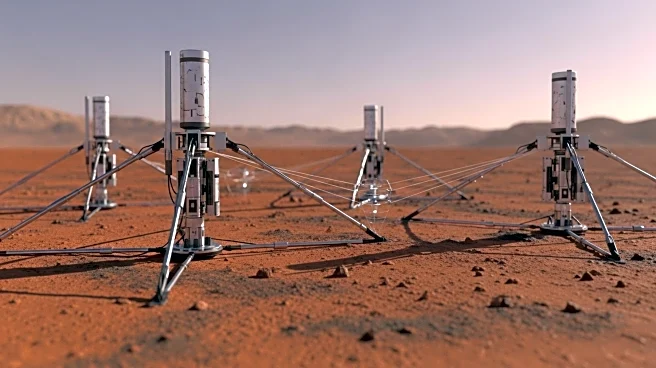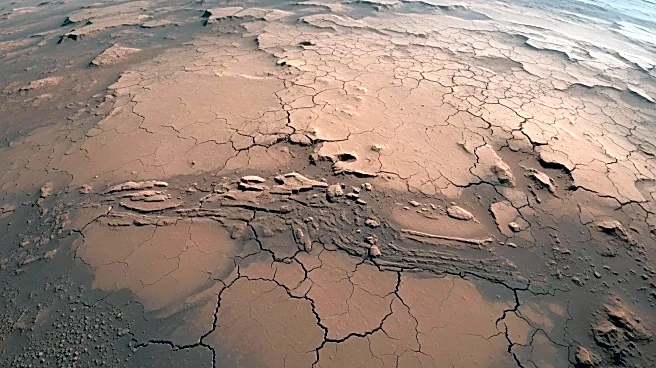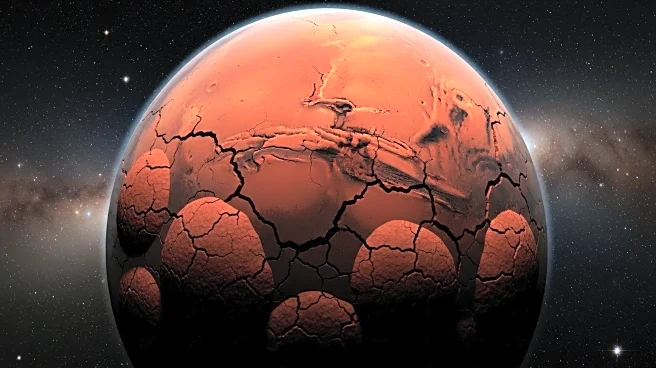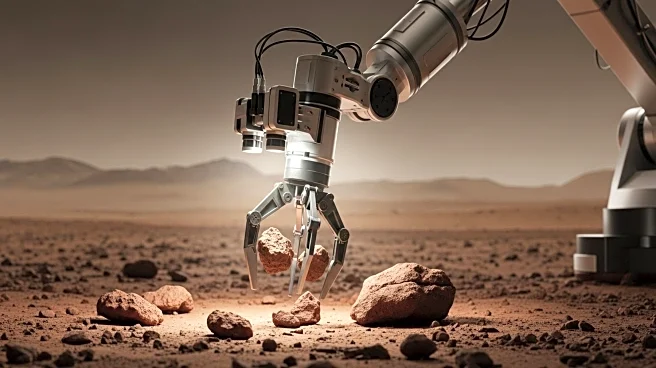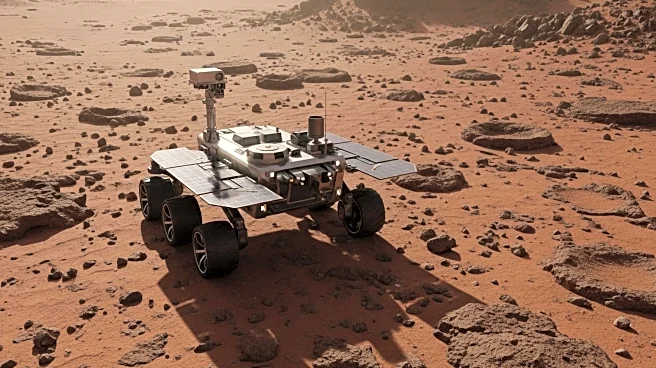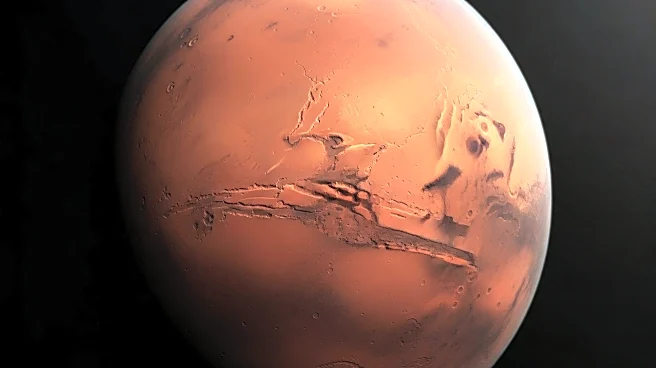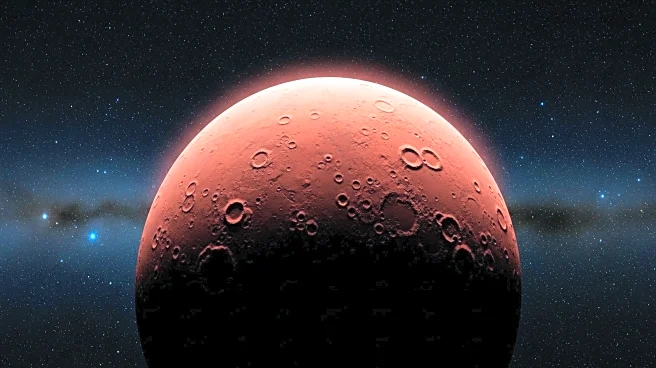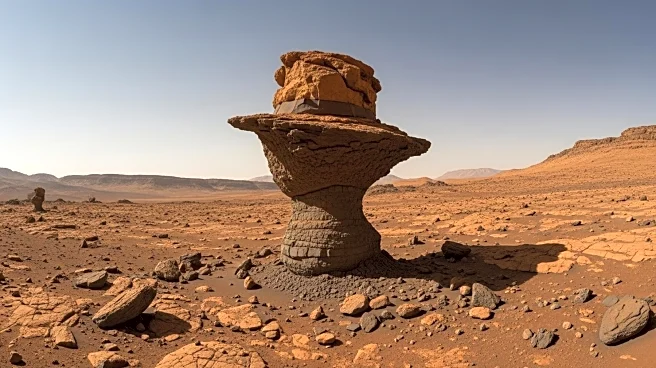What is the story about?
What's Happening?
New research published in the journal Science reveals that fragments from massive space debris, which struck Mars approximately 4.5 billion years ago, are buried deep beneath the planet's surface. This discovery was facilitated by NASA's retired InSight lander, which was equipped with a highly sensitive seismometer. During its four-year mission, InSight recorded over 1,300 marsquakes, allowing scientists to analyze seismic data and uncover these ancient fragments. The study indicates that the energy from seismic waves was altered as they passed through Mars' mantle, suggesting the presence of these massive fragments. The findings provide unprecedented insights into the internal structure of Mars, revealing a mantle studded with ancient debris.
Why It's Important?
The discovery of ancient space debris beneath Mars' surface has significant implications for understanding the planet's geological history and evolution. It suggests that Mars' mantle has evolved slowly over billions of years, preserving these ancient features. This contrasts with Earth, where similar features may have been erased by tectonic activity. The research also raises questions about the formation and evolution of other rocky planets in the solar system, such as Venus and Mercury. By mapping Mars' internal structure, scientists can gain insights into the planet's past and its potential for future exploration and colonization.
AI Generated Content
Do you find this article useful?
